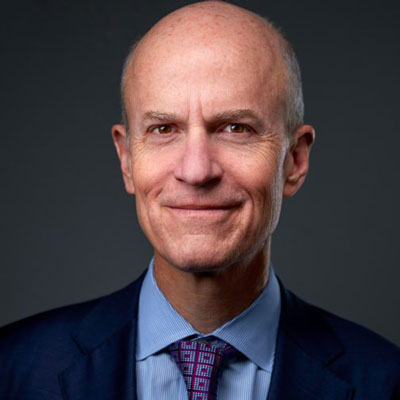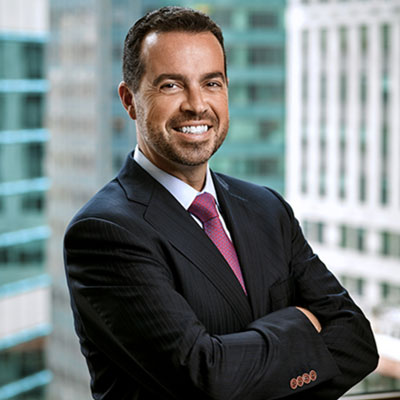Against the backdrop of a measured return to the workplace, office REITs are shoring up strategies to weather current challenges and create more resilient portfolios. Even best-in-class landlords are experiencing some choppy waters these days, with remote work and higher capital costs creating a powerful undertow.
According to weekly data from Kastle Systems’ 10-city Back to Work Barometer, office occupancy stood at 49.7% for the week ending Sept. 27. Leasing activity across the United States is well below 2018 levels, which is creating a tough environment for companies to be able to raise net effective rents and grow occupancy.
“While a lot of the REIT landlords tend to have higher quality portfolios and may be more insulated than market averages, they are still seeing a lot of the pressures that you’re hearing about in the headlines,” says Dylan Burzinski, head of the office sector team at Green Street.
Market data shows steady negative absorption over the past three years that has pushed office vacancies to a high of 20.6% nationally at mid-year, according to JLL. On a positive note, there does appear to be momentum from major employers that are announcing new return-to-work mandates. BlackRock, Goldman Sachs, Amazon, and Salesforce are among those companies that are requiring employees to return to the office for at least three days a week.
JLL estimates that in-office occupancy compared to pre-COVID 19 levels now ranges between 40% and 60%, with expectations that occupancy levels may trend over 80% for the most popular midweek days by year-end. Meanwhile, data from Nareit’s T-Tracker report shows office REIT occupancy at a level of 88.35% for the second quarter.
“The view that the office market is forever fractured or going away is obviously not true,” says Matt DiLiberto, CFO with SL Green Realty Corp . (NYSE: SLG). The market was changing before COVID with a population of buildings that were underperforming, and it is those older vintage, non-institutional buildings that are driving a lot of the negative sentiment around office, he says. “The office is not going away. That said, it will evolve and the best buildings and the best locations with the best operators will be fine,” he says.
Opinions on the future of office are mixed. “We don’t see leasing activity recovering significantly even next year. This could be a longer two-to-three-year process where we’re in a subdued leasing environment, which will impact even some of the higher quality office owners,” Burzinski says.
Some experts are predicting an even longer road to recovery that could extend five to seven years or longer, with a market that will likely shrink as some low quality buildings are razed or converted to alternative uses. Given that backdrop, office REITs are doing a lot of blocking and tackling to maintain and grow occupancy, strategically deploy capital, and guide portfolios through current market challenges.
Flight to quality
Market data shows that leasing activity has skewed more towards quality assets. According to Cushman & Wakefield, Class A buildings accounted for 60.7% of all office leasing over the past six quarters through the second quarter of 2023 versus 58.1% in the three years leading up to the pandemic (2017-2019).
In addition, while overall absorption has been negative dating back to 2020, there has been 83 million square feet of positive absorption in the newest and best office buildings. Cushman & Wakefield data also shows that top tier office buildings have vacancy rates that are over 300 basis points lower than the rest of the office market.
As the largest REIT in the premier workplace segment, BXP (NYSE: BXP) has been tracking the disparity in vacancy and rental rates in the premier workplace market versus the overall office market for the last several years.
“The trend is clear. Premier workplaces—high quality, well located, highly amenitized properties —represent approximately 18% of the total space and 10% of total buildings in our five cities, based on data provided from CBRE, and outperform the overall office market in every city where we track data,” says Owen Thomas, chairman and CEO at BXP.
In addition, there is a further bifurcation in demand for space based on job function, Thomas adds. For example, client and product-facing workers generally demand high quality workplaces that support creativity and in-person collaboration. In comparison, support workers that provide services to the core functions of businesses are more often located in lower tier properties and secondary locations.
“Business leaders understand the importance of in-person work for client and product facing workers and are providing premier workplaces to enhance their enforcement of in-person work policies,” Thomas says.
BXP’s strategy remains focused on maintaining its leadership position in the premier workplace segment. “We continue to invest in our properties to ensure they meet the needs of our clients as they seek to engage their workforce in in-person work, including adding sought after restaurants, amenities, and experiences,” Thomas says. For example, BXP recently added the Savoy Club at the GM Building in New York and the View Boston, a 360 observatory deck at the Prudential Center in Boston.
In a bifurcated market, those office REITs that will come out on top will be the ones that own well-located assets. In particular, there is continued demand for well-located assets in mixed-use environments with lots of nearby amenities and a lively environment that helps to pull employees back into the office, Burzinski says. The challenge for office landlords will be investing in the right designs and amenities to create collaborative environments that attract tenants, he adds.
Future proofing assets
Many of the office REITs have done a good job of keeping their buildings up-to-date and modern. However, there is now a swath of office stock post-COVID that may need more dollars invested in them to be renovated and modernized to fit changing tenant needs, Burzinski says. What that means is that the capital requirements for improvements could be moving higher in the future with owners that need to invest more in their buildings to stay relevant, he adds.
SL Green’s strategy across its history has been to grow a high-quality portfolio of assets with a continual focus on upgrades. “Those properties will always perform better, and in this new market environment that has just accelerated,” DiLiberto says. While the average office occupancy rate in New York City is roughly 80%, SL Green’s occupancy is 90% and the firm’s goal is to hit 92% by year-end. Overall, the office market will likely shrink with obsolete and non-performing buildings that are razed or repurposed to other uses in the future. “Being the best of what’s left is our focus,” he adds.
One way SL Green is future proofing its portfolio is through amenitization. The REIT created an amenity group within the firm two years ago, which has included hiring two executives from the hospitality sector to run the program. That amenity group started with One Vanderbilt as the prototype for how the company wants to operate an amenity program within a building.
SL Green is now expanding that amenity offering throughout its portfolio based on the building and location. Some buildings have free or pay-by-use conference facilities, as well as features such as food and beverage, fitness, and golf simulators. A strong amenity offering can set one building apart from another even at the same price point, DiLiberto says.
SL Green is also looking at opportunities to leverage its amenities to create new profit centers. For example, at some of its buildings the company generates an incremental revenue stream by coordinating after-hours events for tenants. “That is a new profit center for us and also something that is very attractive to the tenant base as they try to get people back to the office,” DiLiberto adds.
Shoring up defenses
Office REITs, meanwhile, are working to improve balance sheets and access to capital. “There has been a focus that has shifted towards liquidity and paying down debt,” Burzinski says. Several office REITs have cut dividends over the past 18 months, in some cases by as much as 50%. Vornado Realty Trust (NYSE: VNO) and Hudson Pacific Properties (NYSE: HPP) have said they will suspend their common stock dividends through the end of 2023. In addition, some office REITs are looking to sell office assets in the private market, on a small scale, to generate funds to pay down their debt.
SL Green made a strategic decision a few years ago to assume a bigger asset manager role and reduce its ownership position in properties. For example, the REIT announced in June that it had sold a 49.9% interest in 245 Park Avenue to a U.S. affiliate of Mori Trust Co. Ltd at a gross asset valuation of $2.0 billion. Being more of an asset manager allows the company to invest less equity but get higher return on that equity through fee streams to manage the assets on behalf of its joint venture partners. According to DiLiberto, that strategy dovetails into other efforts to diversify the business, such as expanding its ancillary income streams. One example of that is generating revenue from its Summit observatory experience at the top of One Vanderbilt.
Another common theme across many of the office REITs is greater diversification. For example, Kilroy Realty Corp. (NYSE: KRC) and BXP have made investments in residential. “By far the largest other property type that these REITs are investing in is the life sciences sector,” Burzinski says. Kilroy, BXP and Brandywine Realty Trust (NYSE: BDN) are all doing development within the life sciences sector to shift their portfolios a little bit away from traditional office, he adds.
“We have made investments in the life sciences and residential segments where we can utilize our expertise to drive future growth,” Thomas says. BXP currently has approximately 1.9 million square feet of lab and life sciences development underway, representing $2.1 billion in investment, which is 65% pre-leased. The REIT is also developing more than 500 new residential units and has an additional 3,000 units in its development pipeline.
Many office REITs are navigating market challenges simply by keeping their heads down and executing their existing strategies. “What needs to really be sorted out is what happens to the rest of the market,” DiLiberto says.
A lot of the focus in the market is on the underperforming assets with high vacancies. “The other side of the coin is that it is creating an opportunity for us to take tenants out of underperforming buildings with landlords that are not as well capitalized, or are not high quality operators, and get them into our portfolio,” he adds.


